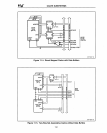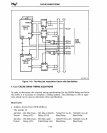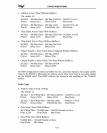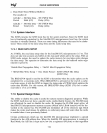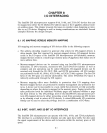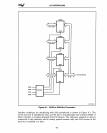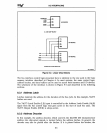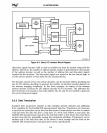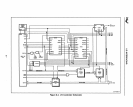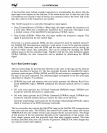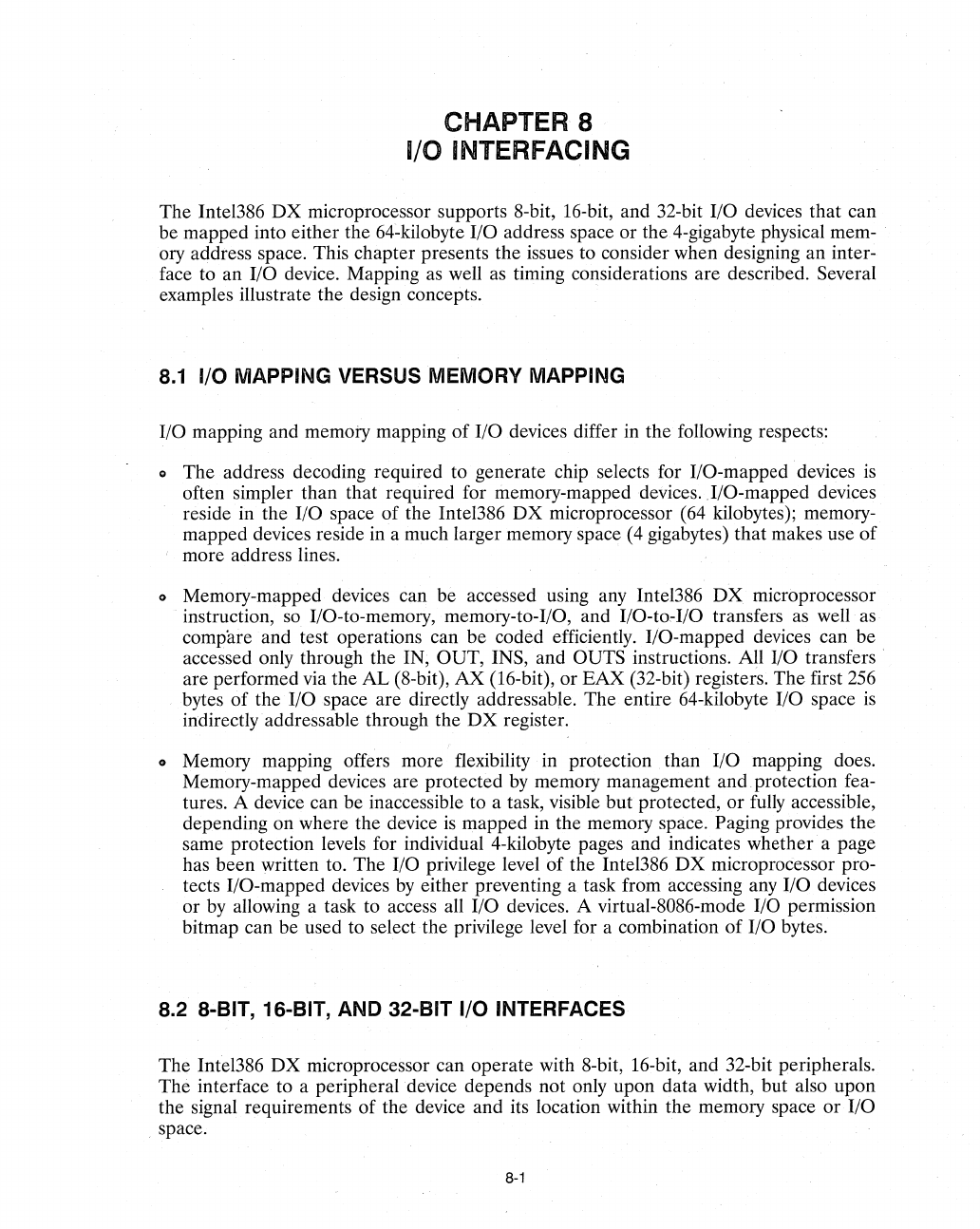
CHAPTERS
I/O INTERFACING
The Intel386
DX
microprocessor supports 8-bit, 16-bit, and 32-bit I/O devices that can
be mapped into either the 64-kilobyte
I/O address space or the 4-gigabyte physical mem-
ory address space. This chapter presents the issues to consider when designing an inter-
face to an
I/O device. Mapping as well
as
timing considerations are described. Several
examples illustrate the design concepts.
.
8.1
I/O MAPPING VERSUS MEMORY MAPPING
I/O mapping and memory mapping of I/O devices differ in the following respects:
011
The address decoding required to generate chip selects for I/O-mapped' devices
is
often simpler than that required for memory-mapped devices. J/O-mapped devices
reside in the
I/O space of the Inte1386
DX
microprocessor
(64
kilobytes); memory-
mapped devices reside in a much larger memory space
(4
gigabytes) that makes use
of
more address lines.
OIl
Memory-mapped devices can be accessed using any Intel386
DX
microprocessor
instruction,
so
I/O-to-memory, memory-to-I/O, and I/O-tocI/O transfers as well as
compare
and
test operations can be coded efficiently. I/O-mapped devices can be
accessed only through the IN,
OUT, INS, and OUTS instructions. All I/O transfers'
are performed via the AL (8-bit),
AX
(16-bit), or EAX (32-bit) registers. The first
256
bytes of the I/O space are directly addressable. The entire 64-kilobyte I/O space
is
indirectIyaddressable through the
DX
register.
• Memory mapping offers more flexibility in protection than I/O mapping does.
Memory-mapped devices are protected
by
memory management and protection fea-
tures. A device can be inaccessible to a task, visible but protected, or fully accessible,
depending on where the device
is
mapped in the memory space. Paging provides the
same protection levels for individual 4-kilobyte pages and indicates whether a page
has been written to. The
I/O privilege level of the Inte1386
DX
microprocessor pro-
tects I/O-mapped devices
by
either preventing a task from accessing any I/O devices
or
by
allowing a task to access all I/O devices. A virtual-8086-mode I/O permission
bitmap can be used to
selectthe
privilege level for a combination of I/O bytes.
8.2 8-BIT, 16-BIT, AND 32-BIT I/O INTERFACES
The Inte1386 DX microprocessor can operate with 8-bit, 16-bit, and 32-bit peripherals.
The interface to a peripheral device depends not only upon data width, but also upon
the signal requirements of the device and its location within the memory space or
I/O
,
space.
8-1



